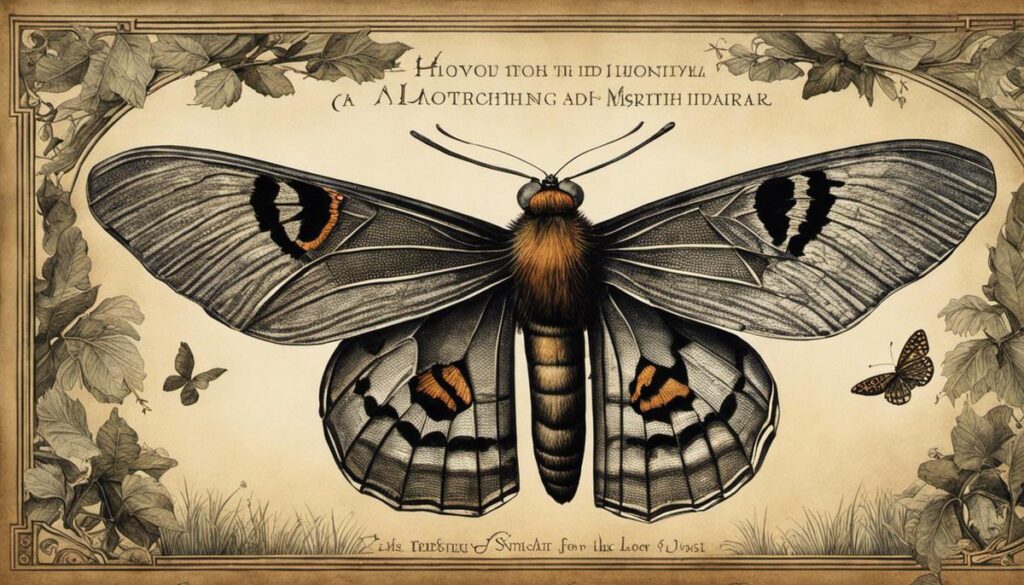The pervasive and intriguing symbolism of moths across various cultures holds a profound historical significance that sparks curiosity. Tracing their roots from ancient symbols to biblical texts provides an illuminating journey into the realm of metaphorical interpretations. Although commonly overshadowed by the butterfly, its more glamorous counterpart, the humble moth holds its own unique symbolic connotation – particularly within the confines of theology. From their physical attributes to their behaviors, each holds deliberate symbolism deeply interwoven within the threads of biblical literature. Meanwhile, in dreams, moths emerge cloaked in layers of symbolic undertones that extend into the psychological domain. But what does a moth signify if it flutters into our dreams, particularly from a biblical perspective? This quest into understanding moth symbolism in dreams under the lens of biblical interpretation unfolds to reveal deeper truths about transformation, impermanence, and spiritual strength.
Historical Interpretations of Moth Symbolism
The Multifaceted Symbolism of Moths in Biblical Literature: A Historic Examination
Moths, often dismissed as trivial beings or mere annoyances, occupy an intriguing and multidimensional symbolical space within the annals of biblical literature. Their symbolic interpretations have evolved, portraying a spectrum that spans destruction, transformation, and spiritual enlightenment. This article delves into the historic interpretation of moth symbolism within biblical texts.
The moth’s association with destructive qualities is one of the most prevalent themes seen in biblical narratives. Book of Job (4:19) and Book of Matthew (6:19-20) echo such sentiments, with moths metaphorically representing destruction and decay. In these contexts, moths serve as embodiments of the fleeting nature of earthly possessions and the inevitability of deterioration. The vivid imagery of garments consumed by moths was a powerful metaphor for the decay of physical, earthly items as against the everlasting nature of spiritual wealth.
In contrast, another facet of moth symbolism is interwoven with themes of transformation and resurrection. Just as the moth metamorphoses from its larva state to attain flight, biblical narratives subtly allude to metamorphosis signifying spiritual growth and enlightenment. Analogously, a soul undergoing a spiritual journey evolves, shedding attachments and illusions before achieving transcendence, much like the transformation of a moth.
Simultaneously, moths in biblical texts also symbolize vulnerability and mortality. Unlike their cousin butterflies that operate during the day, moths are creatures of the night, often navigating life in darkness. This nocturnal nature echoed elements of human vulnerability and mortality. Moreover, the short lifespan of moths resonates with themes of fleeting human life, further underscoring their symbolic significance within biblical narratives.
Moth’s captivity to light sources, often leading to their demise, is another aspect adopted within biblical symbolism. They are often portrayed as souls that are drawn to divinity but easily perish, symbolizing human frailty and the pitfalls of blind faith.
In conclusion, through their ecology and behavior, moths have become rich symbols within biblical literature, their presence shedding light on aspects of destruction, transformation, spiritual enlightenment, vulnerability, and mortality. A thorough understanding of moth symbolism offers invaluable insights into the thematic richness of biblical texts and broadens the scope of literary analysis. The moth, often overlooked, is indeed an essential creature that metaphorically enriches theological and literary discourse through its multifaceted representation in biblical interpretations.
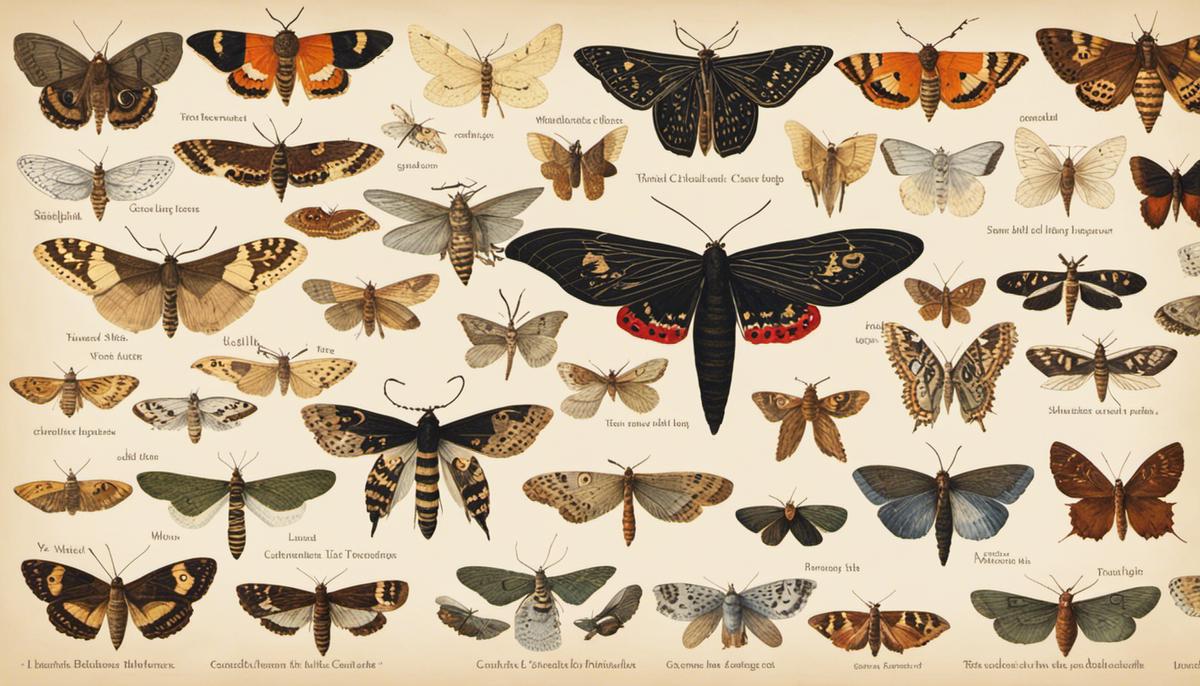
Scientific Overview of Common Moth Species
Decoding the symbolism: Understanding the profound characteristics of common moth species
The realm of natural symbols anoints the common moth with a fascinating diversity of meanings. Parlance entrenched in various domains, from psychological interpretations to folkloric narratives, finds a treasure trove of symbols in these nocturnal creatures. Several critical features of moths correlate directly with the significant symbols they embody – symbols that often transcend cultural and geographic boundaries.
Perpendicular to other indications, the coloration of common moth species concur to the symbolism they convey. Black moths epitomize death, mystery, and uncertainty – an echo of the fear and fascination humanity holds towards the unknown. The white moth, on the contrary, symbolizes purity, innocence, and divinity, owing to their ethereal appearance often associated with positive spiritual entities.
Reinforcing the richness of moth symbolism are their lifecycle traits. The caterpillar-to-moth transformation, witnessed in species like the Atlas moth or Luna moth, symbolizes profound change and metamorphosis. Such a vivid illustration of change underscores the moth’s representation of growth, development, and the inevitability of transformation in human life.
There also exists an intriguing parallel between the moth’s attraction to flame and human impulses. More often than undesirable self-destruction, this ironic infatuation mirrors humans’ often self-defeating pursuit of enlightenment, wisdom, or love. The fatal attraction phenomenon in moths like the Bogong moth or Peppered moth epitomizes this heady mix of desire, danger, and destruction.
The moth’s remarkable navigational strategies also contribute to its symbolic repertoire. Moths’ unique ability to use the moon (transverse orientation) for navigation resonates with humans’ intellectual and intuitive pursuit towards finding direction in life – a path illuminated by the celestial bodies.
The variety in the size of different moth species, from the mammoth Atlas moth to the minuscule Tinea pellionella, adds further dimensions to their symbolism. Associating size with significance, large moths might denote magnified impact or higher stature in symbolic contexts, while smaller moths can depict subtlety, humble prowess, or the intriguing mysteries enveloped in tiny packages.
Overall, moths mirror human life in various perspectives, ranging from vulnerable existence clashing against the calling of a determined destiny, to the perpetual trajectory towards elusive luminosity. The reflective symbolism encoded in characteristics of common moth species strikes a dialogue with the human psyche, fostering a deeper appreciation of the interconnectedness between human symbolism and the wonderful mysteries of the natural world.
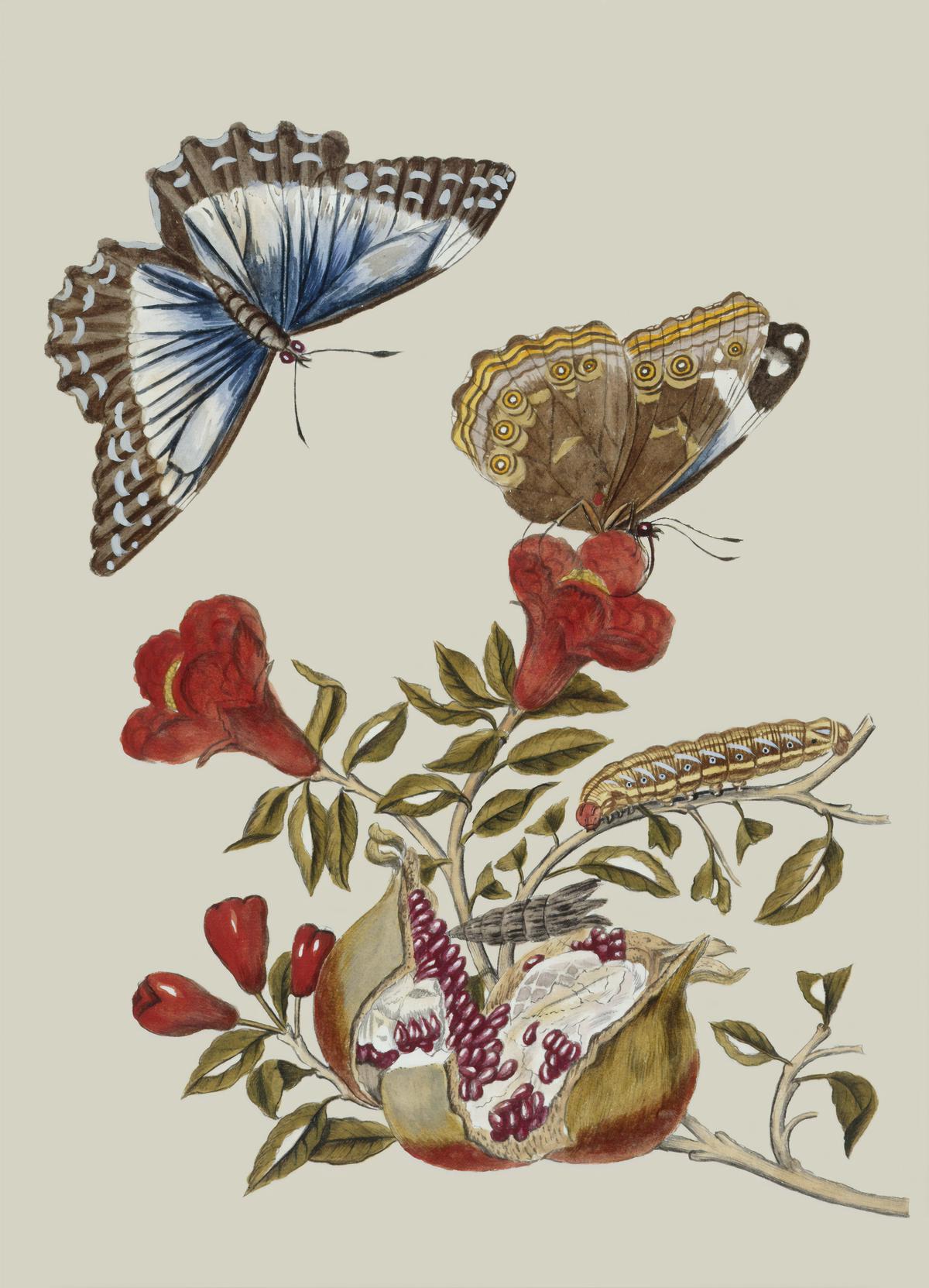
Photo by britishlibrary on Unsplash
Moths in Dreams: Psychological Perspective
Shifting focus now to the realm of dreams, psychology provides varying interpretations that help illuminate the symbolic role of moths in our subconscious mind. Jungian theory suggests dreams act as windows to our psyche, thus, the frequency and nature of moths in dreams may mirror our mental state. On this spectrum, moths might represent our unconscious battle with feelings of insignificance or the fear of being unnoticed, reflecting the moth’s tranquil demeanor and often overlooked beauty.
Freudian theory, on its part, suggests that dreams are repressed longings. Thus, the appearance of moths in dreams could represent suppressed desires for change, mirroring the caterpillar-to-moth metamorphosis, or a hidden attraction to danger, akin to the moth’s fatal attraction towards flame. Interestingly, this could extend to the human struggle with self-destructive tendencies, drawing parallels to the moth’s seemingly inexplicable lure towards a destructive light.
On another hand, the Gestalt theory posits that every element of a dream is an aspect of the dreamer. Consequently, a dreamer encountering a moth might harbor traits akin to a moth, such as adaptability and determination, as reflected in their unfailing navigational strategies. Dreaming of the moth’s transformation could signify the individual’s readiness to undergo personal growth or signal self-realization.
The manifestation of the moth in dreams might also be influenced by its color symbology, with different hues linked to emotions. Dreaming of a white moth, for instance, could potentially reveal the individual wrestling with issues of purity, peace, or spirituality. A black moth, alternatively, could signify repressed emotions or foreboding thoughts.
Moreover, the size of the moth in a dream might convey the magnitude of the dreamer’s thoughts or concerns. A larger moth might indicate a looming issue or a significant life transition, oriented around themes such as change or adaptation, much like the moth’s metamorphic cycle and ability to navigate darkness.
Lastly, considering the moth’s limited lifespan, if this appears saliently in the dream, it might be perceived as a poignant reminder of mortality—a memento mori, or possibly a call for mindfulness towards the fleeting and transient quality of human existence.
The infrequent intersection of entomology and psychology may appear improbable. Still, these multidisciplinary interpretations underscore how connections between humans and the natural world persist psychologically, even in the unconscious realms of dreams. These symbolic contributions of moths in dreams, as informed by psychological theories, therefore offer a richer narrative of human introspection and self-understanding. The convergence of these disciplines further portrays the profound influence of nature on human psyche and accentuates the inextricability of man from the living organisms that share our world.
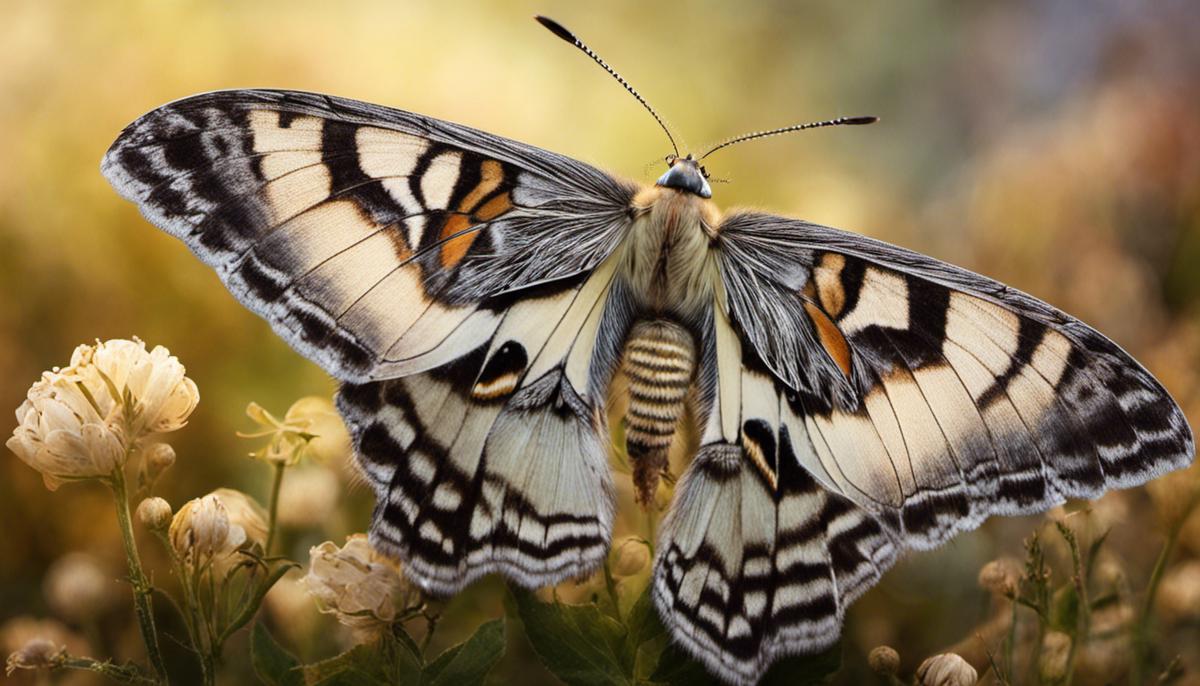
Biblical Meaning of Moth in a Dream: A Deep Dive
“The Unseen Aspects of Moth Imagery: A Deeper Understanding of Dreams and their Biblical Significance”
Building upon the established understanding of common moth symbolism — that they are messengers of destruction and transformation, embodiments of vulnerability and mortality, and often indicators of captivity and blind faith — it is key to delve deeper. Let us take this plunge and decipher the more obscure interpretations of moth symbolism in dreams and connect it to biblical narratives,
Diving into the wealth of moth color symbolism, it is noteworthy that while the color white connotes purity and faith in the Bible, a white moth might represent surrender and humility, akin to the ethos of Christ’s Sermon on the Mount in Matthew 5:3-12. Inversely, a black moth, being reminiscent of darkness in Biblical narratives, could suggest a struggle with sin.
Further, the metamorphosis of a moth, from a caterpillar to a fully matured flying moth, encapsulates a profound biblical notion. This life cycle transformation resonates with the apostle Paul’s message of personal transformation in Romans 12:2.
Moths are famously drawn to the light, often to their demise, its flame exhibiting an irresistible allure. This parallel with Ecclesiastes 1:14’s critique of worldly desires- mere ‘chasing after wind’- is undeniable.
The remarkable navigational strategies of moths that allow them to adapt and thrive in their environment, can be seen as correlative to Jeremiah 29:11’s promise of providential guidance.
Subtly woven into the tapestry of dreaming are theories proposed by Carl Jung and Sigmund Freud. Jung’s theory asserting the moth as a symbol of self, mirrors the biblical concept of dying to self, as expressed by Paul in Galatians 2:20. Freud’s association of moth dreams with repressed desires, seems to reverberate James 1:14’s stance on temptation having roots in personal desire.
Color symbology in dreams can also carry significant meaning. Red moths might encapsulate the passion of Christ or the urgency of Revelation’s apocalyptic message. Green moths may relate to the flourishing ecology promised in Isaiah’s prophecy (Isaiah 35:1).
The context of a moth’s size in a dream could signify the magnitude of a task or issue at hand, much like the biblical tale of David and Goliath, where the scale can either paralyze or motivate.
Subsequently, the interpretation of moths in dreams catering to mortality or mindfulness pertains to the transient nature of life, as affirmed in James 4:14, and the virtue of consistent vigilance as mandated in 1 Peter 5:8.
The symbiosis between entomology and psychology provides an enhanced understanding of dream symbolism. It echoes in narratives of the Bible, reaffirming the human psyche’s innate connection to nature.
In unraveling these possibilities, one finds the threads of moth symbolism in dreams deeply intertwined with biblical interpretations. It’s the exquisite beauty of this interweaving that unveils the profundity of our subconscious connections to the natural world, and in parallel, the multifaceted messages embedded in Biblical narratives. It acutely underscores our inherent interconnectedness to everything around us, a hallmark of an enlightening journey in dream interpretation.
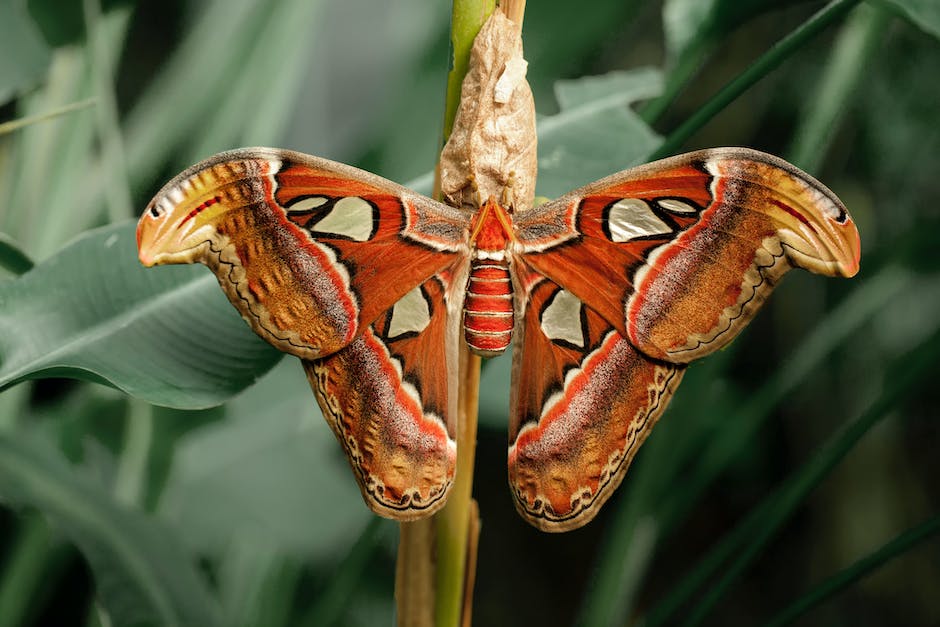
One’s dream encounter with a moth’s fleeting flutter cannot merely be attributed to the alignment of stars or cognitive process. Delving deeper into the realms of theology and psychological symbolism, we begin to decipher the profound meaning underlying such occurrences. When we center these understandings through the lens of biblical interpretation, the moth, often seen as a humble, insignificant creature, metamorphosizes into a potent symbol conveying messages of transformation, impermanence, and at times, spiritual weakness. Filters of biological understanding further enrich our comprehension, bringing light to how the physicality and behaviors of moths have given rise to their distinct symbolism. As such, the moth’s appearance in a dream, as explored through the scope of biblical interpretation, invites us to ponder upon the transitory nature of earthly possessions, the essence of spiritual metamorphosis, and the human struggle with ephemeral temptations. Thus, understanding the moth’s symbolism stimulates a deeper inward journey toward personal enlightenment and spiritual growth.

